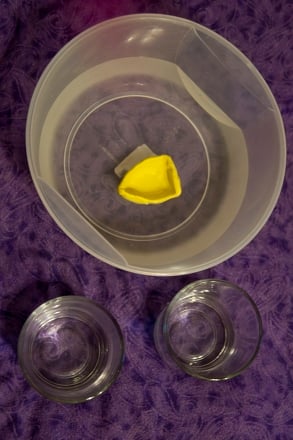Science project
Keep the Boat Afloat
Grade Level: 3rd - 5th; Type: Physics, Engineerig
Objective
This project is an introductory investigation of buoyancy and the shape of different boats for different purposes. The goal is that the student will learn through their own experimentation the reason boats are shaped and engineered the way they are and gain scientific knowledge around a real-world concept.
Research Questions
- What is buoyancy?
- How does density affect buoyancy?
- What is drag and what shapes might affect drag?
- How does a boat carry weight?
- What are the different shapes of boats that people use? How is each of these types of boats used?
- What boat shapes perform the best when you want the boat to move quickly? When you want to carry cargo? Which is best for stability?
Boats serve many purposes: carrying cargo, rescue or wartime missions, recreation, etc. The shape of the boat helps to determine its effectiveness in completing different tasks. Some of the parts of the boat that play a role in the way the boat moves are the hull and keel. By experimenting with the shape and materials used to make these parts of the boat we can determine which shape is best for what purpose, and understand science concepts such as buoyancy and water displacement.
Materials:
-
All materials can be found at a craft store or around the home
-
Balsa wood
-
Heavy cardboard
-
Styrofoam trays
-
Utility knife
-
Modeling clay
-
Hot glue gun
-
Small objects that can serve as weights (pebbles, metal washers, etc.)
-
Aquarium, kids swimming pool or bathtub
-
String or wire
-
Notebook
-
Camera (optional)
Experimental Procedure:
-
Fill up a bathtub, pool or aquarium with water to test your boat shapes in.
-
You will need to know where the hull and the keel of a boat are. For a labeled diagram click here: http://www.sailbakersfield.com/BMYC/documents/SailBoatParts.pdf
-
With an adult’s help cut different hull shapes from balsa wood, cardboard, or Styrofoam trays. For ideas on different shapes, see Figure 1. You can also try basic shapes like rectangles, triangles, etc.
-
Experiment with each to see how quickly they can move across the water when given a little push. Write down observations in your notebook. Use a chart like the one below (Table 1) to keep track of your observations.
-
Experiment by adding weight to the different hulls. You can use modeling clay or whatever you have collected to serve as weight. Which hull moves best as you increase the weight? Make sure you keep track of what you find out!
-
Once you have completed your exploration of different hull shapes experiment by adding keels.
-
Cut two identical hull shapes. Cut a narrow keel and a wide keel. Glue them to the hulls with a hot glue gun. Be sure to get help from an adult.
-
Test the different keel shapes. Which moves faster? Which moves straighter? Create a chart like the one you used in your hull experiments to keep track of your tests and observations.
-
If you are interested in experimenting even more with your boats you could investigate rudders and tillers. What could you use to make a rudder or tiller? Be sure to continue to write down your observations.
-
What other things could you add to your hulls and keels? Sails? Try it out!
-
You may want to take photographs as you complete your experiments to use for your science fair poster or presentation.
-
Research the different types of boats. Which types are shaped the way your experimental boats were? Do your results make sense?

Image from: http://www.rc-airplane-world.com/boat-hull-design.html
Table 1
|
Material used |
Shape of Hull |
Speed
|
Maneuverability
|
|
Balsa wood |
long and narrow |
medium
|
Easy to move, stable |
|
|
|
|
|
|
|
|
|
|
|
|
|
|
|
|
|
|
|
|
Terms/Concepts: Buoyancy; Density; Drag; Boat parts: hull, keel, rudder; Water displacement
References:
- Buoyancy Brainteasers http://www.pbs.org/wgbh/nova/lasalle/buoyancy.html
- Science Fair Project Encyclopedia: Boat Building http://www.all-science-fair-projects.com/science_fair_projects_encyclopedia/Boat_building
- Macaulay, David. The Way Things Work.Houghton Mifflin, Boston. 1988.
Education.com provides the Science Fair Project Ideas for informational purposes only. Education.com does not make any guarantee or representation regarding the Science Fair Project Ideas and is not responsible or liable for any loss or damage, directly or indirectly, caused by your use of such information. By accessing the Science Fair Project Ideas, you waive and renounce any claims against Education.com that arise thereof. In addition, your access to Education.com's website and Science Fair Project Ideas is covered by Education.com's Privacy Policy and site Terms of Use, which include limitations on Education.com's liability.
Warning is hereby given that not all Project Ideas are appropriate for all individuals or in all circumstances. Implementation of any Science Project Idea should be undertaken only in appropriate settings and with appropriate parental or other supervision. Reading and following the safety precautions of all materials used in a project is the sole responsibility of each individual. For further information, consult your state's handbook of Science Safety.













